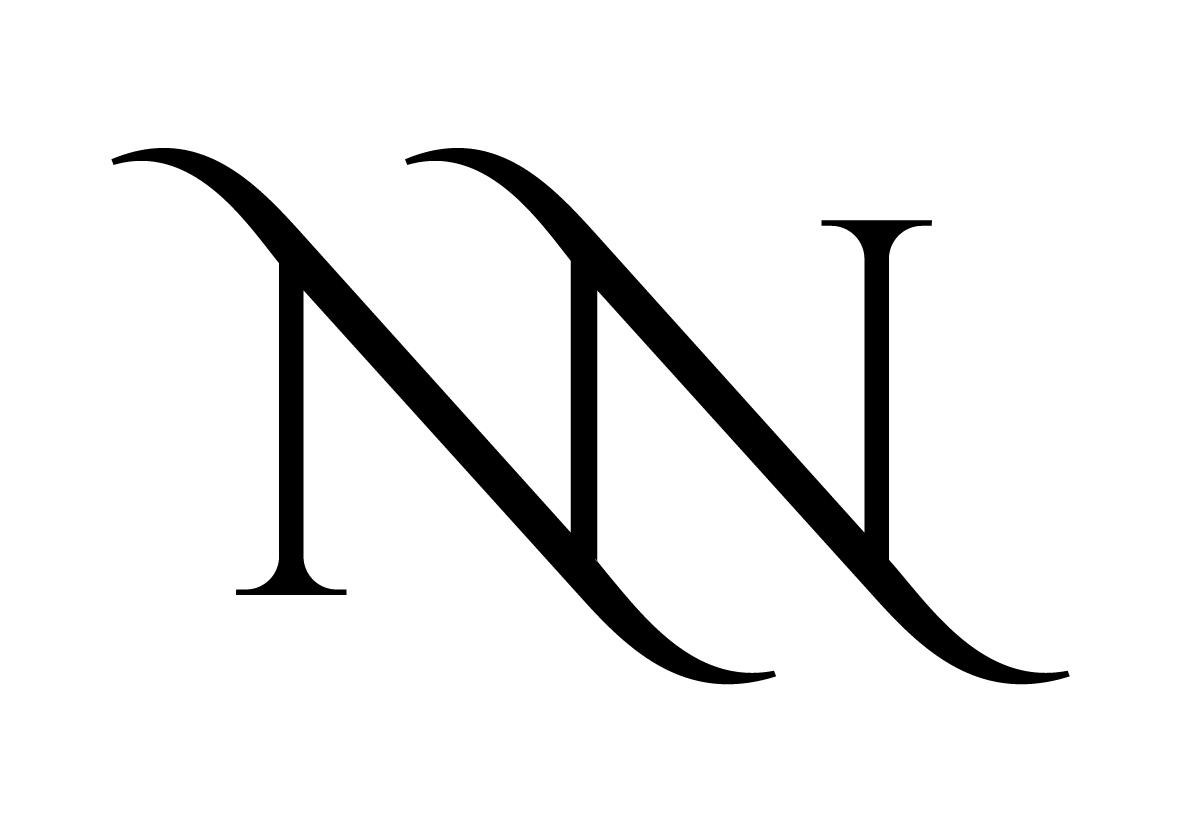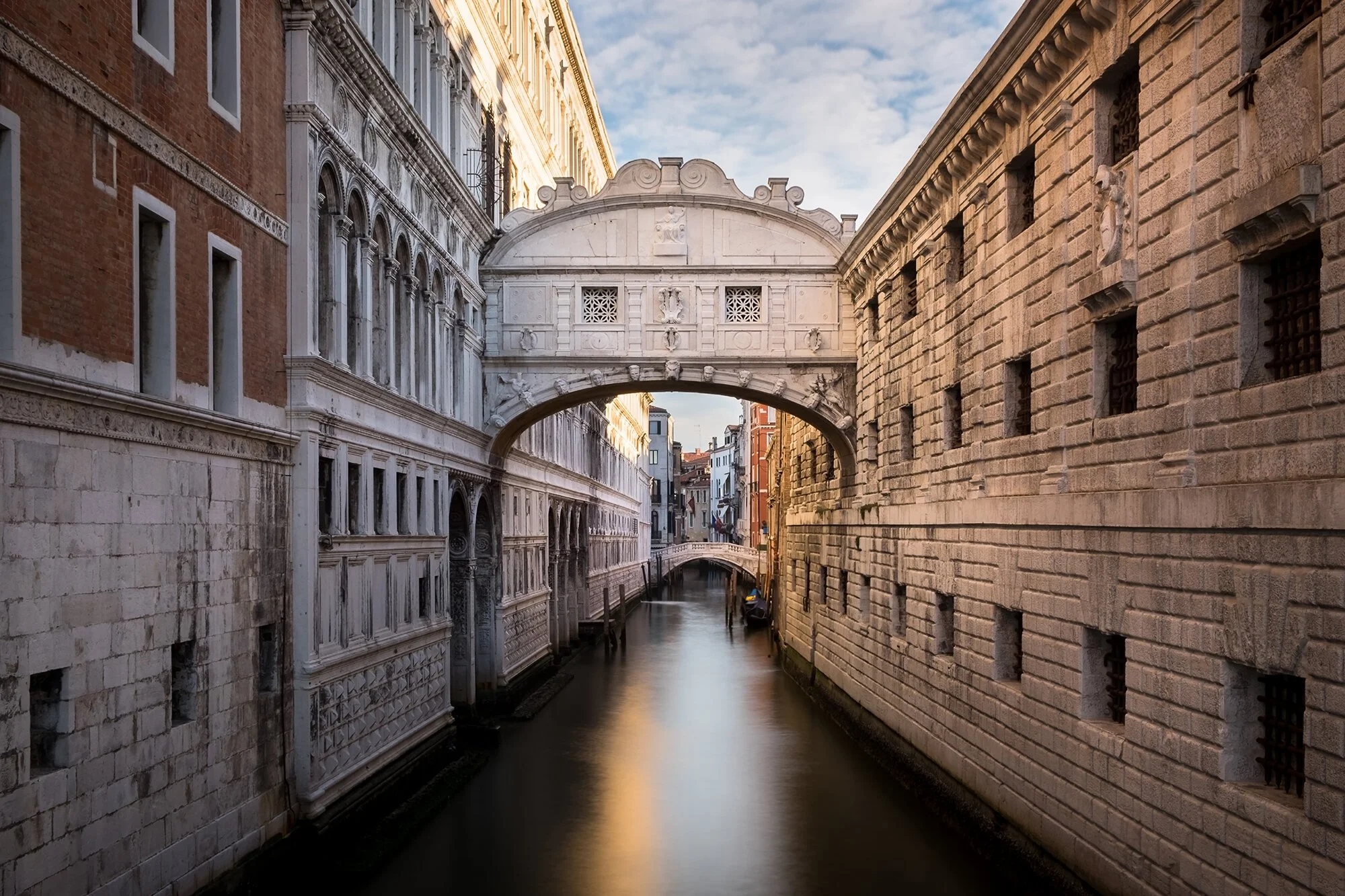40! The interstice between young and old (or so I like to tell myself, refusing to accept that maybe I simply am old). Venice! La Serenissima — A city of profound heritage that, for some, espouses bromides of beauty, but in truth possesses an unparalleled depth and breadth of what it means to be beautiful. And as beauty and truth go hand in hand, and since Oscar Wilde told us the truest form of truth is the gymnastic sort that is paradox, the Venice of today balances antiquity and modernity with dexterity and grace.
In the tendril-thin canals and “calli” between opposites, the harmony of identity flows. Like cities, we contain liminal spaces and as we age, we unveil new selves in those spaces. In the tensions betwixt our selves, we learn to become acrobats as we walk the tightrope of being and unbeing, of becoming and unbecoming — and, crucially, of “Unselfing” as Iris Murdoch termed our internal journey toward The Good and Universal Love — crossing bridge after bridge, connecting our many selves and disconnecting from who we no longer are over the liquid landscape of life.
Join me to Unmask Venice, as I unearth more of my Self through the gift of time. Let’s discover what lies behind — and all that is because of — the veneer of Venice. Here, where the past, the present, and the future are bridged, the borders between fantasy and factuality are blurred. Between possibility and reality lies the shadow. We will dance in the shadow. And our dancing will be the light. This is Venice. And this is Forty.
— MASKS —
— TRAVEL —
— ACCOMMODATION —
— EXPERIENCES —
— GIFTS —
WHO WILL YOU BE FOR ONE NIGHT? YOU CONTAIN MULTITUDES!
Our main event, the birthday ball, is a masked affair.
Venetian masks can be purchased from an array of places– from Amazon to etsy to Venice– and at a variety of price points. If you are feeling crafty, try making your own. Have fun with it!
Ca’Macana, Atelier Marega, and Marega Renzo Atelier are lovely Venetian options for online or in person purchase.
The Venetian masquerade mask has a rich history deeply intertwined with the Venetian Carnival and the Republic of Venice dating back to the medieval and Renaissance periods. Originally deployed for anonymity and freedom of expression, thus dissolving social boundaries and allowing for other aspects of the self to be revealed, Venetian Masks evolved from simple coverings to elaborate, artistic creations. Commedia dell’Arte masks date back to the second half of the sixteenth century and represent characters, ethnic traditions, professions and trades closely tied to the different cities of Italy, personified by professional actors in that ancient form of improvisational theater.
Six million ways to fly; choose one.
Getting To Venice
Venice’s airport is Venice Marco Polo Airport (VCE).
From the US, United Airlines runs a daily direct flight from Newark Liberty Airport (EWR) to VCE.
From the UK, there are numerous airline options for direct flights to VCE, including British Airways, Easyjet and Ryan Air.
From Accra, airlines such as Turkish Airlines, British Airways, ITA and Brussels Airlines can get you to VCE with only one stop.
You may also to choose to fly into a major city like Milan and take either a Trenitalia or Italo train to Venezia Santa Lucia train station (Milan to Venice by train is a roughly two-hour journey)
Airport Transfers
There are three ways to travel by water from Venice Marco Polo Airport to your lodging. Here they are in order of most convenient to most economical.
1) Private Water Taxi
This is the most convenient option for airport transfer and will cost you around €160 (to be paid in cash to the captain on the boat). You may also choose to pre-book your water taxi transfer through your hotel’s concierge service or via sites like Viator or Get Your Guide.
Simply follow the signs for water transport in the airport and board the first available private water taxi at the dock. Your water taxi will take you straight to the dock of your hotel (or the closest accessible dock if your lodging is not on the water).
2) Shared Water Taxi
Shared water taxi transfers from the airport are a good mix of convenience and affordability. These transfers must be pre-booked through sites like Viator or Get Your Guide and usually cost around USD50 per person. Additional fees may apply for extra luggage beyond one suitcase and one carryon. These transfers usually take you to a number of pre-determined docks so you will have to check which stop is closest to your hotel.
At the airport, follow the signs for water transport and find your designated boat on the airport dock.
3) Alilaguna Waterbus
This is the most economical means to travel to and from VCE. Prior to your arrival in Venice, ask your hotel what the closest Alilaguna waterbus stop is to them, which waterbus line to take (Blue or Orange line), and how long the walk from the Alilaguna stop to the hotel is.
At the airport, buy your ticket from the Alilaguna-marked ticket machine in the baggage claim area (€18 one way, €32 round-trip) (or pre-purchase tickets via Viator or Get Your Guide) and follow the signs in the airport for water transport. Once on the dock, queue in the right line and board the appropriate boat. Note that you’ll likely have to walk a little distance from your Alilaguna stop to your accommodation and the walk may involve climbing some steps or crossing some bridges.
Travelling Around Venice
Venice is a pedestrian and boat only city. For your convenience, water taxis have been pre-arranged for our shared experiences for which you signed up. You may have to walk or take a short water taxi (hotels can easily ring one up for you) to our starting meeting points (please consult the itinerary PDF for all meeting points and other information).
Venice is extremely hot and humid in August. I encourage you to plan to stay hydrated and to carry a folding hand-fan. All our indoor activities will take place in air-conditioned or fan-equipped rooms.
places of interest for your free time in venice
Amani Bruno | Glass and Mirror Shop
Camera Photo Epoche | Archive and shop of vintage photos of Venice
Laguna-B Glass | Shop and Library
Libreria Acqua Alta | Quirky bookshop famous for storing books in gondolas and bathtubs as a solution to the city’s frequent flooding
Negozio Olivetti | former Olivetti typewriter showroom now turned museum
Palazzo Ducale / Doge’s Palace | Historical palace that served as the residence of the Doge, the elected leader of the Venetian Republic
Palazzo Grimani | historic Venetian palace turmed museum of Renaissance art and architecture alongside a collection of ancient sculptures
Palazzo Fortuny | Studio and home of versatile artist Mariano Fortuny turned Museum
Peggy Guggenheim Collection | European and American Art of the first half of the 20th century
Restaurants in venice worth trying
Glam | Two Michelin Stars; Fine Dining ; Intimate and Atmospheric | €€€€
Quadri | One Michelin Star; Fine Dining; Opulent Surroundings | €€€€
Al Covo | Family-Owned; Farm-to-Table; Seafood-Forward | €€€
Da Lorenzo - Al Giardino Segreto | Hidden Gem; Garden Setting | €€€
Lineadrombra | Beautiful Views; Inventive Venetian Cuisine | €€€
Al Grill San Marco | Relaxed Steakhouse; Wine Bar | €€
Africa Experience | Pan-African cuisine; Casual Dining; inspired by the dishes that refugees have reinvented during their long journeys. | €
YOU DESERVE TO REST, AND TO REST BEAUTIFULLY…
The five-star Venice Venice Hotel is something achingly fresh for La Serenìssima. Art-filled and artful, with a bracingly contemporary style that sits in paradoxical harmony with the old-school splendour of its Grand Canal setting, everything about TVVH breathes the life of modern flair into a vivant antique soul. Find an unexpectedly avant-garde spa, atmospheric bedrooms with cinematic views, charming terrace breakfasts and a painstakingly curated collection of art and intrigue…
I’d love for you to stay The Venice Venice Hotel, whether for your entire stay in Venice, or for one our two nights around the main celebration.
To book, email events@venicevenice.com and mention that you are Natasha Nyanin’s guest for 15% Discount on rooms in our block.
Here are some suggestions of other hotels of varying styles for sundry tastes that you may consider for your stay:
Housed in Venice’s former stock exchange, with a gold-mosaic spa bath in the eaves and courtyard bistro at street level, this five-star hotel has a surprise on every floor.
NH Collection Venezia Grand Hotel Palazzo dei Dogi
Situated in one of the few remaining residential districts in Venice, this converted palazzo affords you old-world Venetian charm and easy access to a stretch of atmospheric and affordable local bars and restaurants.
Occupying an ancient Venetian palace just minutes from the Rialto Bridge, Hotel Al Ponte Mocenigo reproduces the evocative atmosphere of 18th century Venice without the premium prices.
This charming boutique hotel (which also has apartments for rent) is just a three-minute walk from The Venice Venice Hotel and was once the home of Marco Polo.
WHERE WILL YOU GO? WHERE WILL YOU FLOW?
I hope that you will enjoy all the activities we have poured love and thought into planning for your time in Venice. Below you will find the PDF of our itinerary as well as the catalogue detailing the description each of experience and activity. Let’s flow!
Below is the brochure activities, with detailed descriptions of each experience:
Through the hands of such as these God speaks
As saccharin as this may sound, I consider your attendance the ultimate gift: planning this sojourn has been an emotional exercise for me and one in which I have felt a certain degree of pain every time someone I dreamt of sharing this moment with declined attendance. So the fact that you are making space in your life to honour this milestone with me is not a reality I take for granted.
Still, a number of you have asked me about my gift list and at the suggestion of one of you dear beings, I have set up these payment links for cash donations towards, well, my existence, if you would indeed like to give in such a manner. Please know that I know that coming to Venice is no insignificant expense and that should you wish to give beyond that, I am beyond grateful. And as you give, may you remember the words of Achille Papin in the banquet of a film that is Babette’s feast:
“Through all the world, there goes one long cry from the heart of the artist: ‘give me leave to do my utmost!’”
In the world of capitalism, the “leave” to do one’s utmost is, quite simply, money. By giving a cash gift, you are giving me the gift of the freedom to create; the opportunity to realise in physicality the dreams I hold in my spirit.
You may also scan this QR Code to give a gift
Calligraphy by Betti Soldi
VENICE: THE CREATIVE MELTING POT
“In the 16th century through the 18th century, Venice was a cultural melting pot, where art, music, and drama flourished. The far off empires that came to trade in its ports left behind pieces of their cultures, from exotic spices and patterned fabrics, to strains of melodies and the blueprints for elaborate mosaics. The artists and musicians who called Venice home absorbed these new ideas into their own works, which were then transported all over Western Europe through paintings, drawings, concertos, and operas. The distinctly Venetian works of this period reflect the city’s centuries-long reputation as a place of economic and cultural exchange.” In short, what we think about as “distinctly Venetian” is, in actuality, particularly multicultural and deeply diverse.
RILKE’S VENICE
“‘He had no house, no address where you could look for him, no home, no permanent residence, no office. He was always travelling around the world and no one, not even he himself, knew in advance where he would turn next…’* Rilke criss-crossed Europe; he visited Russia and sailed on the Nile; he was at much at ease in provincial Worpswede as in the metropolitan city of Paris or at a remote country seat in Bohemia. And over and over again, he went to Venice: St Mark’s Square and the Lido, the Doge’s Palace and the Grand Canal were his intimate friends. He visited the city ten times; the first was a weekend in March 1897, the last, in June and July 1920…Among the many places Rilke travelled to, Venice represented a special challenge, because no other European city has such a rich artistic tradition in such a small space — the city in its entirety is a synthesis of art forms…His texts [about Venice] offer none of the conventional images of La Serenissima as a city of decadence…Rilke is regarded as a poet of the inner world. No one has created inner spaces like him, using only words…that resist being deciphered. But Rilke does not ignore reality, at least not in his Venice poems…Rilke was not interested only in his own subjectivity. He wanted to penetrate to the essence of a city like Venice, behind the façades…Rilke neither created a new myth of Venice, nor perpetuated the old myth of decadence. In place a of a compact, unified image of the city, he bequeathed us a modern one…he reordered Venice into something new and more personal. We do not have to share his passion for Madonnas and his distaste for traditional trattoria [sic]. But we can learn from Rilke and his attitude to travel.”
Birgit Haustedt, Rilke’s Venice
*from Stefan Zweig’s The World of Yesterday
















